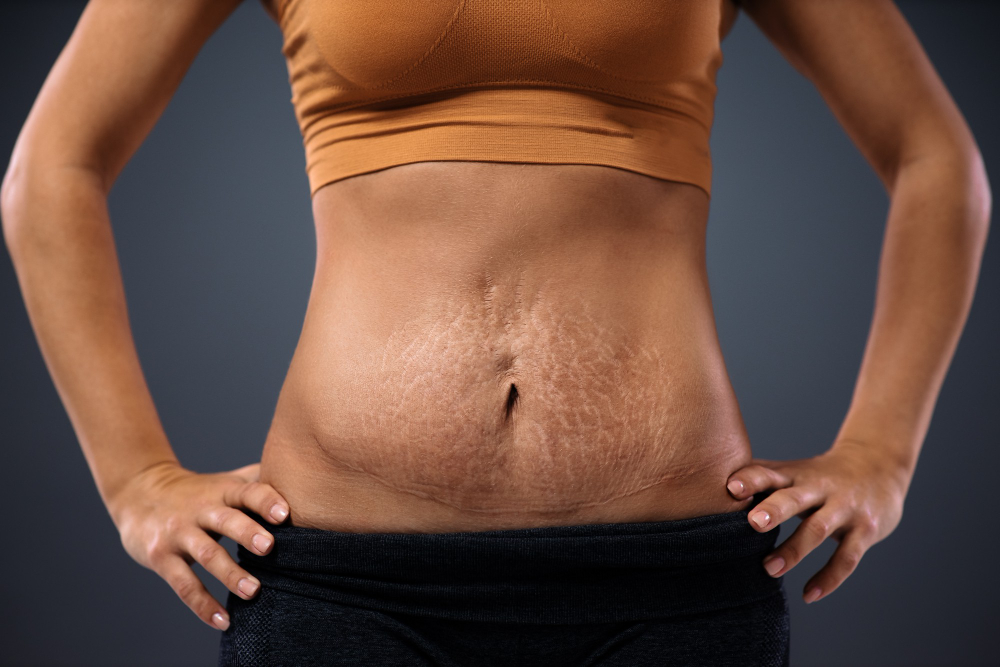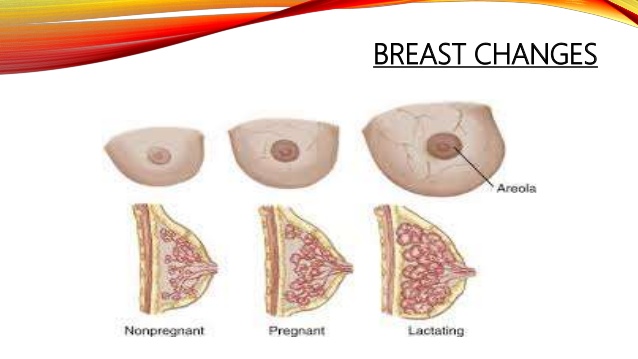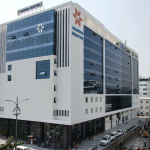
Unveiling Tummy Tuck Scars: What to Expect and Where
A tummy tuck, or abdominoplasty, is a transformative surgery that creates stunning and incredible dimensions for many patients. However, there are many concerns regarding the scarring from an abdominoplasty. This is understandable, as any potential surgery can feel frightening, especially regarding scarring. Patients need to be aware of scarring location and prominence. This can help ease concerns and allow you to make an informed decision.
Along the Lower Abdomen: The Main Incision
Excess skin is removed from the middle and lower abdomen during a full tummy tuck and includes an incision across the lower waist from hip to hip. This incision creates the space visibility for your cosmetic surgeon to eliminate skin and fat from the lower abdomen and the region slightly above the belly button.
A tummy tuck creates a flatter, toned abdominal region and can remove stretch marks in the skin. However, the scar from an abdominoplasty is inevitable as this incision is necessary to create a flatter, toned stomach. The length and visibility of the scar depend on the type of tummy tuck performed and the amount of excess skin removed during the procedure. However, most tummy tuck scars are discreetly placed low on the pelvic region and can be hidden underneath clothes and swimsuits.
Around the Belly Button: Secondary Incision
A full tummy tuck Bellevue can include the incision from hip bone to hip bone as well as a minor incision above the navel. This secondary incision allows the surgeon to restructure the belly button, remove overhanging skin, and eliminate stretch marks that reach higher up on the abdominal region. It also allows the leftover skin to be reshaped and placed in a better location.
The belly button incision is necessary to reshape and reposition the navel and create an aesthetically pleasing core. The scar around the navel is minimal and typically fades over time but does not entirely disappear. Sometimes, the reshaped belly button can change structure with time but never return to its original appearance.
Less Scarring with Mini-Tummy Tuck: A Variation
A mini tummy tuck is a less invasive procedure that creates a smaller scar for those needing minimal skin removal. A mini tummy tuck Bellevue is another type of abdominoplasty that creates a flatter and tighter lower waist. It only removes the appearance of a pooch or overhanging skin in the low abdomen.
The scar from a mini tummy tuck is smaller and runs along the low pubic line, reaching the hips. It does not include a secondary scar above the belly button and requires less downtime during recovery. However, it does not remove as much skin as a full tummy tuck and only focuses on the lower portion of the stomach. Most patients prefer a full tummy tuck for extensive results.
Individual Variations and Considerations
Every patient is unique and responds differently to a cosmetic procedure. The visibility and prominence of a tummy tuck scar depends on the individual patient, their genetics, and how well they care for their scar. Keeping up with topical scar treatments, eating a healthy diet, drinking plenty of water, and avoiding direct contact with the sun can help minimize the appearance of your scar.
Being open and honest with your board-certified cosmetic surgeon about your concerns and potential scarring is essential. During a consultation, your provider can help you make an informed decision and guide you to the right surgery for your needs and overall goals.
Choosing the Right Procedure: Factors to Consider
Potential scarring is not the only factor to consider when deciding if a tummy tuck Bellevue is right for you. When deciding which type of tummy tuck is best for you, consider the amount of skin you need removed. While a mini tummy tuck may have more minimal scarring, it also removes a minimal amount of skin from the lower abdomen.
Both surgeries have incredible benefits depending on your aesthetic goals and concerns. A full tummy tuck provides dramatic results that can reshape the lower abdomen and belly button. However, a mini tummy tuck can help create a beautiful, flat shape for the lower abdomen and has less scarring and downtime.
Conclusion
A full tummy tuck leaves a thin scar from hip to hip and one above the navel. A mini tummy tuck only has one smaller incision that does not reach the hips. However, the scars from a tummy tuck can be well hidden and are not as prominent as you may believe. Open communication with your board-certified plastic surgeon is the best way to determine which procedure is best for you. With time, adequate care, and an experienced provider, scarring from a tummy tuck is nothing to worry about. A tummy tuck Bellevue is a transformative surgery that can increase your shape and confidence.

Unlocking Your True Self: The Objective Path to Facial Feminization Surgery
What is Facial Feminization Surgery (FFS)?
Facial feminization surgery—often abbreviated as FFS—is a gender affirming procedure commonly performed on transgender women. The surgery consists of a combination of facial procedures designed to take traditionally male-presenting features and make them look more female-presenting. This could include surgeries like a brow lift, chin reduction, lip lift, rhinoplasty, and several others.
No two facial feminization surgeries will look exactly alike. The best facial feminization surgery is customized to fit the patient and does not unnecessarily operate on areas that the patient is happy with or which already align well with their preferred gender.
In comparison to the lengthy history of other medical procedures and technologies, facial feminization surgery only began in the twentieth century. The earliest cases of gender affirming surgery took place largely in Germany at the Hirschfeld Institute or otherwise supervised by Dr. Hirschfeld—one of the first doctors to study gender and gender dysphoria.
World War II proved to be a setback in gender affirming care when much of Hirschfeld’s research and his facility were destroyed. Thankfully, hormone therapy became available and greatly benefited transgender people of the time. Gender affirming body surgeries began to take place in more places around the world including the United States.
In 1983, facial feminization surgery emerged in San Francisco. Dr. Douglas Ousterout—a craniofacial surgeon who specialized in plastic surgery—is considered the “father” of facial feminization surgery. Many of the techniques he developed are still used today. It started with a forehead feminization procedure and slowly other procedures like hairline lowering and tracheal shave were added.
Since the 1980s, surgeons all around the world have continued to learn and improve upon FFS techniques. It is now a fairly common surgery for transgender women to seek out.
Reasons to Consider FFS
Transgender people seek gender affirming surgery like facial feminization because it can help treat and alleviate gender dysphoria. Gender dysphoria is a medical term that recognizes the mental anguish, anxiety, depression, and even suicidal thoughts that can come from feeling like their physical form is incorrect or incongruent with their gender assigned at birth.
The severity and degree to which a person may experience gender dysphoria will vary. Some experience no dysphoria, others may only feel it surrounding certain parts of the body, and, finally, some may experience a much more widespread gender incongruence.
Facial feminization takes traditionally masculine features and makes them appear more feminine. A few ways it may do this include narrowing the jaw, reducing the size of the chin, lowering the hairline, shortening and narrowing the nose, reducing the size of the forehead, creating a rounder-looking forehead, and addressing a noticeable Adam’s apple. Of course, there are other possible procedures or results that surgeons may perform to help a patient better align with their individual identity.
Benefits of Facial Feminization Surgery
Transgender women who undergo facial feminization surgeries often experience many possible benefits such as:
- Softer, rounder facial features
- Smaller facial features and structure
- More of a rounded hairline
- Reduces gender dysphoria
- Allows the patient to more easily present as female publicly
- Can help improve symptoms of mental health issues such as anxiety, depression, etc.
- Improved confidence
- Helps boost self-esteem
- Patient is able to see a more accurate self-image in the mirror
- Permanent results
- Customized to fit the specific needs of the patient and their unique anatomy
What Does Facial Feminization Surgery Change?
The exact changes that a specific FFS procedure makes will differ between patients. Though, FFS can address almost every facial structure and feature:
- Hairline: Male hairlines often sit higher up on the skull, begin receding early, and take on more of an M shape. FFS can lower the hairline via hairline lowering surgery, and it can reshape the hairline through hair transplants.
- Forehead: A male forehead protrudes more prominently than a female one. They also tend to have a straighter profile and are larger. FFS helps reduce the projection of the forehead and may subtly reshape it so it takes on a more curved profile.
- Brows: Like the forehead, the male brow bone is much larger and protrudes noticeably. A surgeon may set the brow bone further back and also may shave down the orbital rims which contribute to the appearance of the brows.
- Nose: Female noses tend to be smaller, narrower, and often straighter. FFS commonly helps slim the nose and adjusts the size to better suit a female appearance.
- Midface: Female cheeks may be rounder and include higher cheekbones. While it is rare to get cheek implants, it is not unheard of. Many patients opt for non-surgical enhancements such as hyaluronic acid filler to address the cheeks.
- Lips: The distance between the bottom of the nose and the top lip is shorter in women. A lip lift can help shorten this distance as well as subtly create a more feminine lip appearance. For increased plumpness, many patients choose to get lip filler. However, lip implants are also an option.
- Chin: The female chin tends to be smaller and more rounded. This can be achieved through chin reduction surgery. In rare cases, a patient may benefit from a chin implant in addition to or instead of chin reduction surgery.
- Jaw: The jawline is often shaved to create a slimmer and rounder chin contour.
- Neck: Women do not have as prominent of an Adam’s apple so a tracheal shave can help reduce its projection.
Not every patient will have all of the features addressed. The best facial feminization surgery is custom tailored to meet a patient’s specific goals and needs.
Duration of FFS Results
For the most part, the results of FFS are considered permanent. For example, rhinoplasty, tracheal shave, and any shaving procedure are reliably permanent. Brow lifts and similar procedures may occasionally need touch-ups as a person ages. Additionally, any non-surgical procedures a patient may have done as part of FFS will need regular treatments to maintain results.
Complications of FFS
All surgeries have the potential for complications. As a usually long surgery that addresses multiple areas, FFS can have elevated risks for some patients. Possible complications include infection, visible or raised scarring, asymmetry, unsatisfactory results, and prolonged side effects.
Surgeons who perform the best facial feminization surgeon take steps to minimize and prevent complications:
- Thorough patient screening at the consultation and before surgery
- Patient may stay overnight for monitoring
- Hair transplant performed under local anesthesia to prevent too much time under general anesthesia
- Detailed post-operative instructions
- Regular follow-up appointments
- Starting or ceasing certain prescription medications before or after surgery
- Provide the patient with a realistic idea of recovery and results
Pain and Recovery After FFS
After surgery, it is normal to experience post-operative pain. The face does tend to swell and this can cause discomfort. Surgeons usually prescribe a pain medication and antibiotics. Patients may also take certain supplements to minimize and prevent bruising. However, patients should know that FFS can involve an intense recovery.
Patients will see side effects and pain subside significantly over the first two weeks. Residual swelling can last for months. Patients can usually return to work in two to three weeks. It can take two to three months for patients to get back to their full range of activities.
Recovery Timeline for FFS Surgery
In the initial days following FFS surgery, patients can expect to rest and focus purely on recovering. Patients often need to follow a liquid diet for at least a few days. After a week or so, most bandages can be removed and patients can become more active at home. Patients tend to discontinue prescription medication within a week.
After two to three weeks, patients can return to work and basic activities. However, they should continue to avoid exercise or anything strenuous. Swelling should have gone down significantly and patients should be much more comfortable than they were immediately after surgery.
Two to three months after surgery, patients can return to all of their activities. Some residual swelling may still be present, but largely unnoticeable. Patients can use makeup to hide scarring and should continue to protect their scars with clothing or strong sun protection.
Conclusion
The best facial feminization surgery allows patients more freedom and agency within their lives. It helps to alleviate gender dysphoria and can have other mental health benefits. However, there are drawbacks and risks that patients should be aware of before undergoing the surgery. Meet with a few surgeons, research, and go into FFS making an informed decision. This lets patients feel more confident and often happier with their procedure.

Pregnancy: Sign, Symptoms, Overview & Health Tips you need to follow
Overview
During ovulation, the sperm fertilizes an egg after releasing it from the ovary. Then the fertilized egg travels down into the ovary and implantation occurs. As a result of successful implantation is pregnancy.
A full-term pregnancy is about 40 weeks. you should keep in your mind that many factors can affect the pregnancy so that women should receive an early pregnancy diagnosis and parental care. If pregnant women follow regularly important health tips during pregnancy will likely experience a healthy pregnancy and give birth to a healthy baby. all the pregnancy information is important for your health and also for your baby’s health. There are many ways to prevent pregnancy and effective birth control.
The most common early signs and symptoms of pregnancy are :
Sporting and cramping

When the sperm travels through the vagina, into the uterus, and formed an egg found in the fallopian tube. at this time fertilized egg attaches itself to the wall of the uterus. this sign begins anywhere from 6 to 12 days after the egg is fertilized this is called implantation bleeding.
Breast Changes

After conception, the level of the hormone of women changes rapidly. Because of these changes their breast becomes swollen sore.it occurs 1 or 2 weak later after conception. the area around the nipples called areola might darken. If these changes occur due to pregnancy it might take several weeks to get a new level of hormones. once a new level of hormones comes then there is ease up in the breast pain.
Fatigue

It is very normal to feel tired during pregnancy. if women feeling tired due to pregnancy so they must eat food that is rich in protein and iron.it can help to offset it. It is related to a high level of a hormone called progesterone also other things like lower levels of blood sugar, lower blood pressure, and a boost in blood production.
Nausea(morning sickness)

Nausea during pregnancy may occur at any time but mostly it seems that it occurs in the morning.it is a very famous or common sign of pregnancy but this is not necessary to get every pregnant woman. This is also related to hormonal changes because every woman does not eat proper food which is eaten by pregnant women for their health and also for their baby’s health.
Missed Period

The instant pregnancy test for women is missed period. It is the most evident sign of pregnancy but not every time it is not every time delayed due to pregnancy and also there are many more reasons for a missing period like you gained or lost too much weight, fatigue, and stress, or many more other possibilities. They missed a period when they stop taking birth control pills. But if the period is missing you should get to the pregnancy test.
Symptoms during pregnancy
Moodiness
This is also a common symptom during pregnancy because of the overflow of hormones in your body in early pregnancy that can make you unusually emotional and weepy.
Bloating
During early pregnancy there is hormonal changes occur that can cause you to feel bloated, similarly that you fell at the starting of your menstrual period.
Light spotting
When the fertilized egg attaches to the wall of the uterus about 10 to 14 days after conception and bleeding is occurs which is known as implantation bleeding. It takes place at the time of the menstrual period but it is not necessary for all women. sometimes it is the first sign of pregnancy.
Constipation
Constipation is an infrequent bowel movement, small, hard to pass, stool. and its examples are dehydration, lack of dietary fiber and physical inactivity, etc. it is also due to hormonal changes that cause the digestive system to slow down, which lead to constipation.
Nasal congestion
During pregnancy, there is an increase in hormone levels and blood production which is causing the mucous membrane in your nose to swell, dry out and bleed easily. This causes a runny nose.
Above there is some common sign and symptoms during pregnancy but there is much more significant and symptoms which are seen during pregnancy some of them are Heartburn, food aversion, diarrhea, vomiting, frequent urination, raised temperature, dizziness, headache and many more.
Some health tips that need to follow by pregnant women
Eating is most important during pregnancy, they should eat some healthy and nutritious food for their health and also for their good delivery experience.
During pregnancy, your body shape is rapidly changing so for a good experience you should wear tight clothes that can suffocate you and your body.
Pregnant women should have talked to their baby who cuddled in your womb. It should be good for your mental health and these are memorable and soul-soothing activities.
Pregnant women should necessarily exercise regularly because during pregnancy their body goes under several changes like shape and weight.
Drink more water to still dehydrated yourself drinking more water is beneficial for all but pregnant women should necessarily drink more water for their health
Signs of a Healthy Pregnancy
• Their Blood Sugar and Blood Pressure levels are normal
• Health of the Uterus and Placenta
• The development of the Foetus is normal
• weight gain of pregnant women
Pregnancy is one of the memorable periods for many women. In this time they should not take any stress only think about their baby and their health. For any type of query regarding their pregnancy, they should regularly contact their doctor.









